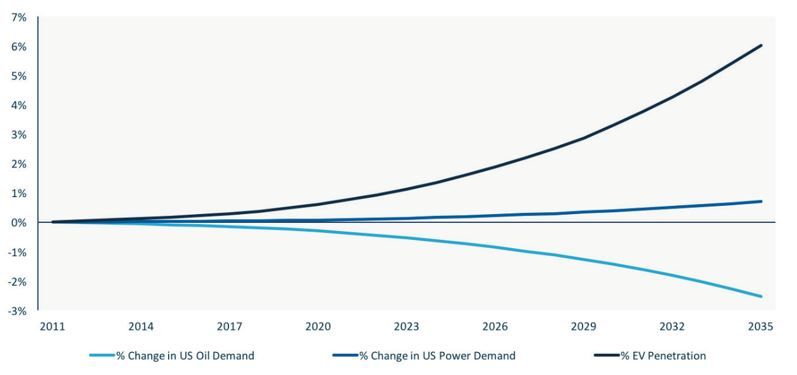According to a report released earlier this year by Wood Mackenzie, Tesla’s Model 3 will spur widespread adoption of electric vehicles, which will in turn reduce U.S. gasoline demand by 300,000 barrels per day by 2035.
The report, Tesla Model 3: Does It Signal an Electric Car Revolution?, is bullish on the Model 3. The authors point to the current success of Tesla’s Model S and the huge number of preorders for next year’s Model 3 as early indicators of its future mainstream adoption.
However, Tesla won’t be the only vehicle manufacturer to benefit from the sales of electric vehicles.
“The impact of Model 3 on the larger energy markets will not be in how many Model 3’s Tesla sells but what it has arguably done to spur wider electric-car production,” says Prajit Ghosh, Wood Mackenzie research director and lead author of the report. “Movements toward producing more models and brands of electric cars are already underway, and by 2020 consumers will have many more EV options than they do today.”
By 2035, Wood Mackenzie estimates that electric vehicles will account for 12 percent of new-car sales in the U.S., which represents 16 million vehicles. This base-case scenario would mean a reduction of gasoline demand by 350,000 barrels per day, a 5 percent reduction of today’s consumption.
FIGURE: Sector Demand Impacts of EV Adoption (Base Case)

Source: Tesla Model 3: Does It Signal an Electric Car Revolution?
The report breaks down several scenarios based on varying electric-vehicle adoption rates.
Wood Mackenzie’s "increased adoption" case assumes that in 2035, electric vehicles will represent 85 percent of all new car sales. Under this scenario, U.S. gasoline consumption would be reduced by 1 million barrels a day. In Wood Mackenzie's "disruptive" scenario, the impact could be as high as 2 million barrels per day.
Can the power sector absorb the impending EV demand?
According to the report, the U.S. can expect EVs to drive between 50 to 200 terawatt-hours of incremental power demand between now and 2035.
“EVs would likely become a disruptive force in the oil industry before they do for the power industry, especially considering that much of the charging infrastructure is currently being built in areas affected by renewable over-generation, where additional demand would be welcomed,” said Ghosh.
“For most of the ‘what if’ scenarios we analyzed,” added Ghosh, “power markets should be able to absorb the incremental demand from EVs given the timeframe, but local issues are still possible in pockets of high EV penetration.”
***
For more information, download the report brochure here.



